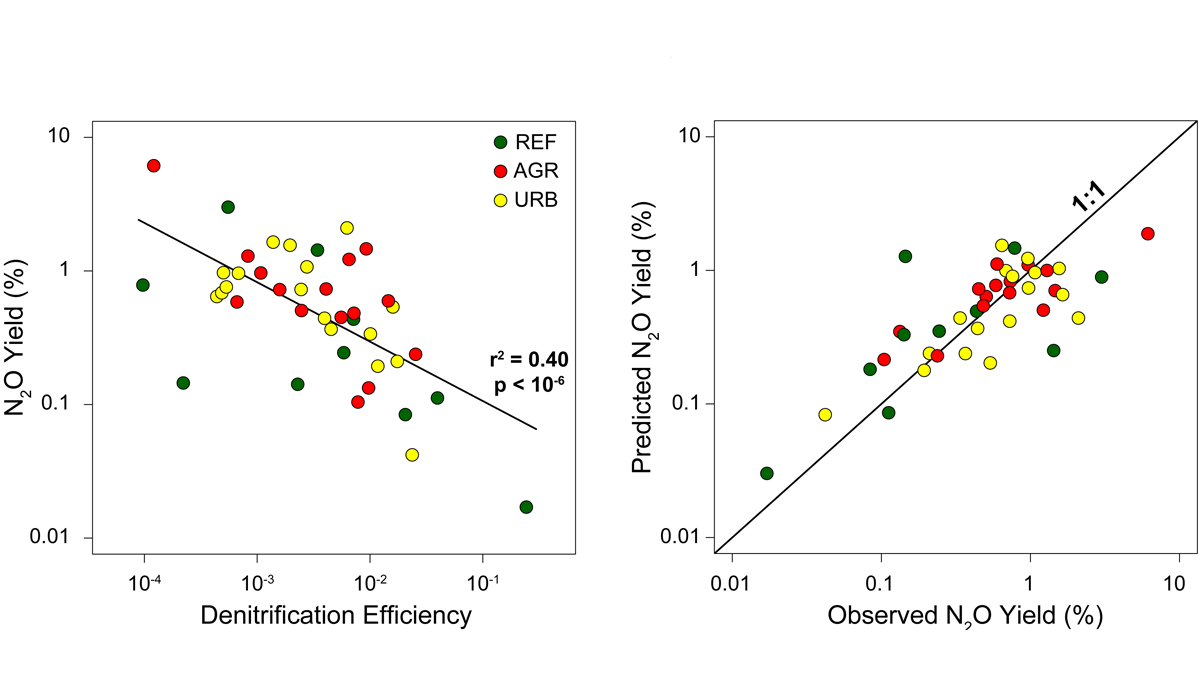Editors’ Highlights are summaries of recent papers by AGU’s journal editors.
Source: AGU Advances
River systems are important sources of the powerful greenhouse gas nitrous oxide (N2O). These emissions have grown substantially in recent decades, largely due to the increasing amount of nitrogen-bearing fertilizer that ends up in the river. Winnick [2021] now shows through the analysis of an extensive experimental dataset and numerical modeling that denitrification, i.e., the conversion of fixed nitrogen into harmless N2 gas, in river systems can alleviate part of this problem. He finds that river systems where denitrification is very active, thanks to the presence of microzones devoid of oxygen, have low N2O yields. This implies that river restoration projects in regions with high nitrogen loads should aim to create many such anoxic microzones in the streambed through, e.g., reducing the flow speed. This would not only reduce the fixed nitrogen loads in the river, but also reduce the N2O that ends up in the atmosphere.
Citation: Winnick, M. [2021]. Stream transport and substrate controls on nitrous oxide yields from hyporheic zone denitrification. AGU Advances, 2, e2021AV000517. https://doi.org/10.1029/2021AV000517
—Nicolas Gruber, Editor, AGU Advances

